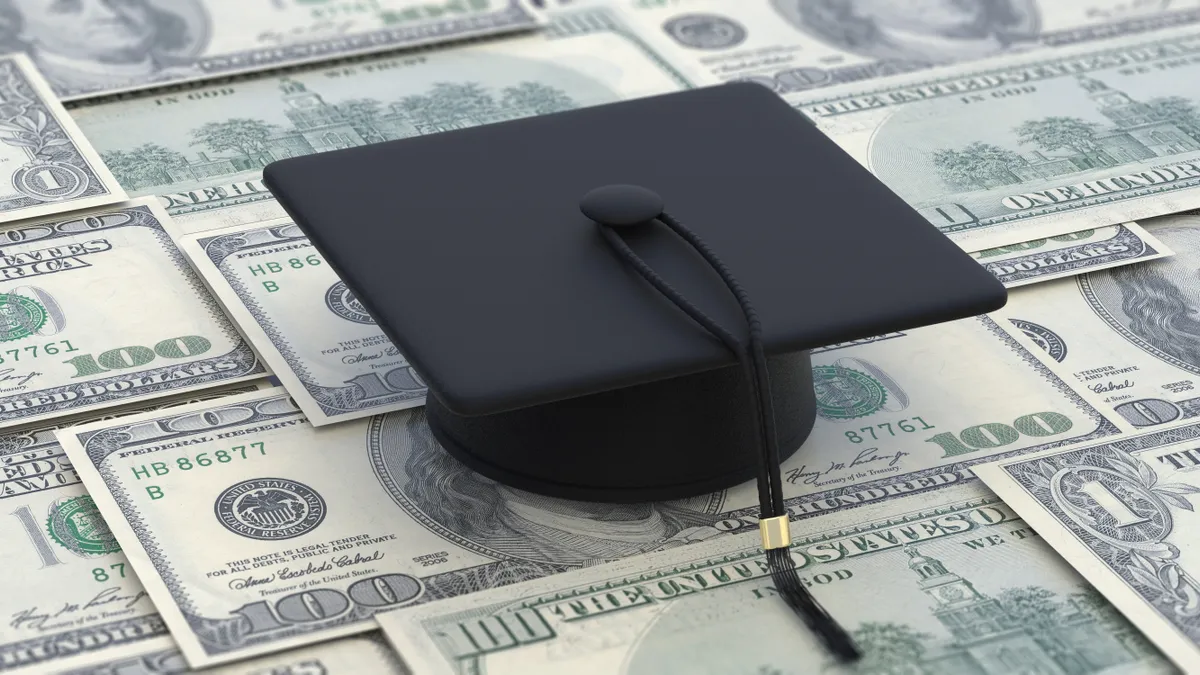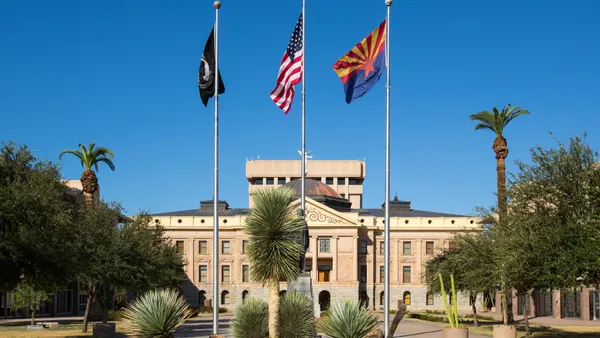Dive Brief:
-
Education finance experts warn that school districts' budgets are "headed for a wild ride" in the coming years. Due to an influx of federal pandemic relief funding, most school districts are currently experiencing an increase in spending that will last until approximately the 2023-24 school year.
-
However, beginning in the 2024-25 school year, districts will experience a negative impact on finances due to four "atypical financial shocks" likely to hit many districts, said Marguerite Roza, director of Georgetown University's Edunomics Lab, in a webinar Thursday. "This is where things get really pretty ugly," she said.
-
The anticipated end of Elementary and Secondary School Emergency Relief spending in September 2024, enrollment declines leading to fewer revenues, the state of the labor market and inflation, and an economic slowdown impacting state revenue growth are all expected to harm district budgets to varying degrees.
Dive Insight:
According to Roza and her colleagues, the events putting districts most at risk are:
- The ESSER funding cliff: Districts using ESSER money for recurring financial commitments via budget backfilling, new hires or permanent raises are most likely to be impacted by this.
- Enrollment declines leading to fewer revenues: Urban districts, districts closed longer during the pandemic, and districts in Northern states are most at risk for this.
- Inflation, labor scarcity and new hiring leading to recurring financial commitments: Districts offering permanent raises that are larger than the usual 1-2% on top of 3% through step or column increases, and those growing their staff rolls, are most vulnerable to budget woes on this front.
- An economic slowdown affecting state revenue growth: Districts that are more dependent on state revenue, or in states more affected by economic slowdowns, will be most impacted by this.
Total public school enrollment is projected to decrease another 4% by 2030, according to predictions from the National Center for Education Statistics. On top of enrollment declines that districts have already experienced as a result of COVID-19 pandemic closures, this could be financially destabilizing for districts.
"But really, the forecast ahead is for continued longer-term decline," said Roza. "And that is something that districts really haven't had to wrestle with in the last several decades." Prior to COVID-19, public school enrollment was largely on the rise.
These declines in enrollments and revenue will come as districts could potentially be increasing teacher pay by 2-5% and also pursuing ambitious hiring plans. "The commitments we're making now will stick around for a while and have a drag on district budgets," Roza warned.
In the end, districts may decide to pursue more layoffs for lower-cost jobs like junior teachers or physical education teachers, Chad Aldeman, policy director at Edunomics Lab.
"So you might need to do layoffs, even as you continue to hire [for] things like special ed or science or other chronic shortage areas," said Aldeman.
Districts can prepare for these changes ahead of time, ed finance experts said, especially considering they are currently sitting on cash and might be pressured into increasing financial commitments as a result during negotiations with, say, teacher unions.
"But I think the more a district can communicate these forecasts largely to the community — including to principals and to teachers, and to the board, and to the public — the more you'll be in a legitimate position in negotiations," Roza said. "I think we need to have this conversation publicly about what is coming down the pike…we can do things now that will alleviate some of that financial pinch that the districts will see.















